“Iraq?! What in God’s name could be good about going to Iraq?!”
These are the usual reactions we receive when sharing stories about work or service in the Middle East, especially Iraq.
Or in my family’s perspective, “We did everything we could to leave the danger of that region, and somehow you feel compelled to throw yourself back into the fire?”
If only it were that simple.
Being born into Western privilege as an American, yet understanding Eastern culture and the many injustices that are either planted in or sprouting through the region, we feel a responsibility to bridge a gap that appears to ever increase as acts of senseless violence continue to perpetuate.
See when people hear the word Iraq, thoughts of turmoil, violence, and barbaric hatred usually surface. These views stem not only from the repetitive negative images that we see on mass media, breeding fear and separation, but also due to the harsh reality that there is indeed a centre noire here for one of the cruelest forces of evil, and that is the notorious name of ISIS. (Not to mention our history of war with the region.)
Now, there is no denying that the above corruption exists, however, we forget, or perhaps are simply unaware, of the majestic environmental beauty, rich history, and highly diverse social fabric of this part of the world.
Renowned as the cradle of civilization, yet destructed by the self-seeking politics of the uncivilized (both internally and externally), Iraq’s ancient communities and lush aquatic landscapes are made invisible under the fog of war. And worse, are being destroyed and extinct from it.
Iraq hosts one of the most locally pluralistic populations in the region. Iraqi Arab Muslims, Shia and Sunni, uphold the majority. But the minorities (namely in Iraqi Kurdistan, the autonomous northern region of Iraq) are some of the most unknown communities in the area.
The Kurds, Assyrians, Chaldeans, Syriacs, Turkmen, Yazidis, Shabakis, Bahai, Armenians, Jews, Mandeans, and more each play a role in the unique social fabric of the land, with distinct customs, languages, and beliefs. When I asked our dear Kurdish driver Amin what connects the many groups here, he laughed and said “A smile is the strongest and most beautiful language!”
In an ideal world, it would be wonderful to say these many communities are wholly united through a smile, but sectarian strife is certainly an issue, especially while ISIS’ presence grows in neighboring municipalities, and chaotic leftovers in Baghdad leaves Iraqi Kurdistan (the autonomous northern region) with legal confusion.
Arabic may be the lingua franca of the land, but most of such communities do not actually speak Arabic at home. The ancient languages spoken here include Kurdish, Neo-Aramaic, various Turkish dialects, among others.
The Kurds have left a special mark on our hearts with their over the top hospitality. Just thinking of the stark contrast of how the people of the Middle East are represented compared to what actually happens when interacting with the locals is an anomaly in itself. They will quite literally take the shirt off their own back first to serve you, even if they have nothing to clothe themselves with.
The Yazidis are the main population we have been visiting at the camps. Their strength as a people is simply astonishing. You may remember the Yazidi people from the famed Nativity story. The Three Wise Men – (also known as the Magi) – that would be their ancestors. Though they are overcoming the pain of an inhumane genocide, their resilience is evident as they share their survivor stories. Layla, for example, still strives to smile and gain the necessary skills to become economically independent after her family was killed by ISIS. She still strives to smile after being held under sexual enslavement. She refuses to give up and that in itself epitomizes the spirit of the Yazidi people.
The Assyrians, Chaldeans and Syriacs have fought for generations to keep their Christian faith alive while combating Islamic extremism. They have managed to preserve the beautiful Neo-Aramaic language (think Passion of the Christ – same tongue). And every Turkmen we’ve encountered is extremely passionate, thoroughly educated.
Not just the demographics, but even the environmental beauty is out of this world (perhaps literally). =)
Historians often link modern day Iraq to the ancient Biblical Garden of Eden. Lush greens, pockets of marshes, waterfalls, and rivers showcase a side of Iraq outsiders may have never seen. Home of the Tigris and Euphrates, Iraq is an environmentalists dream landscape.
While I was taking in the fresh crisp air on a land of green pastures, thinking about the dark presence of ISIS only twenty minutes from us was inevitable. How could such vivacious beauty and gruesome death exist side by side?
The tragedy of Iraq is that it has been both a blood bath of division and yet a natural paradise for centuries. Sectarian strife, irresponsible leadership, foreign occupation, fundamental mentalities and financial motivations have all played a role in today’s climate of both Iraq and Iraqi Kurdistan.
And yet despite history’s continued repetition, we still hope to change history. We cannot stop hoping. The moment we stop hoping, the fertile crescent as we know it, will most certainly be the infertile crescent, eternally.
